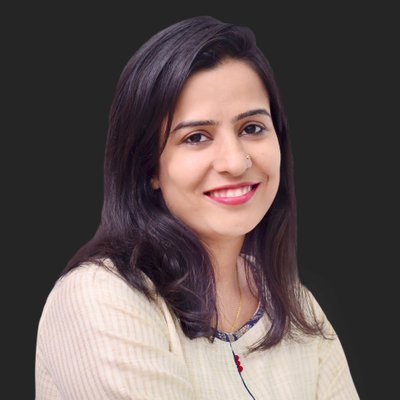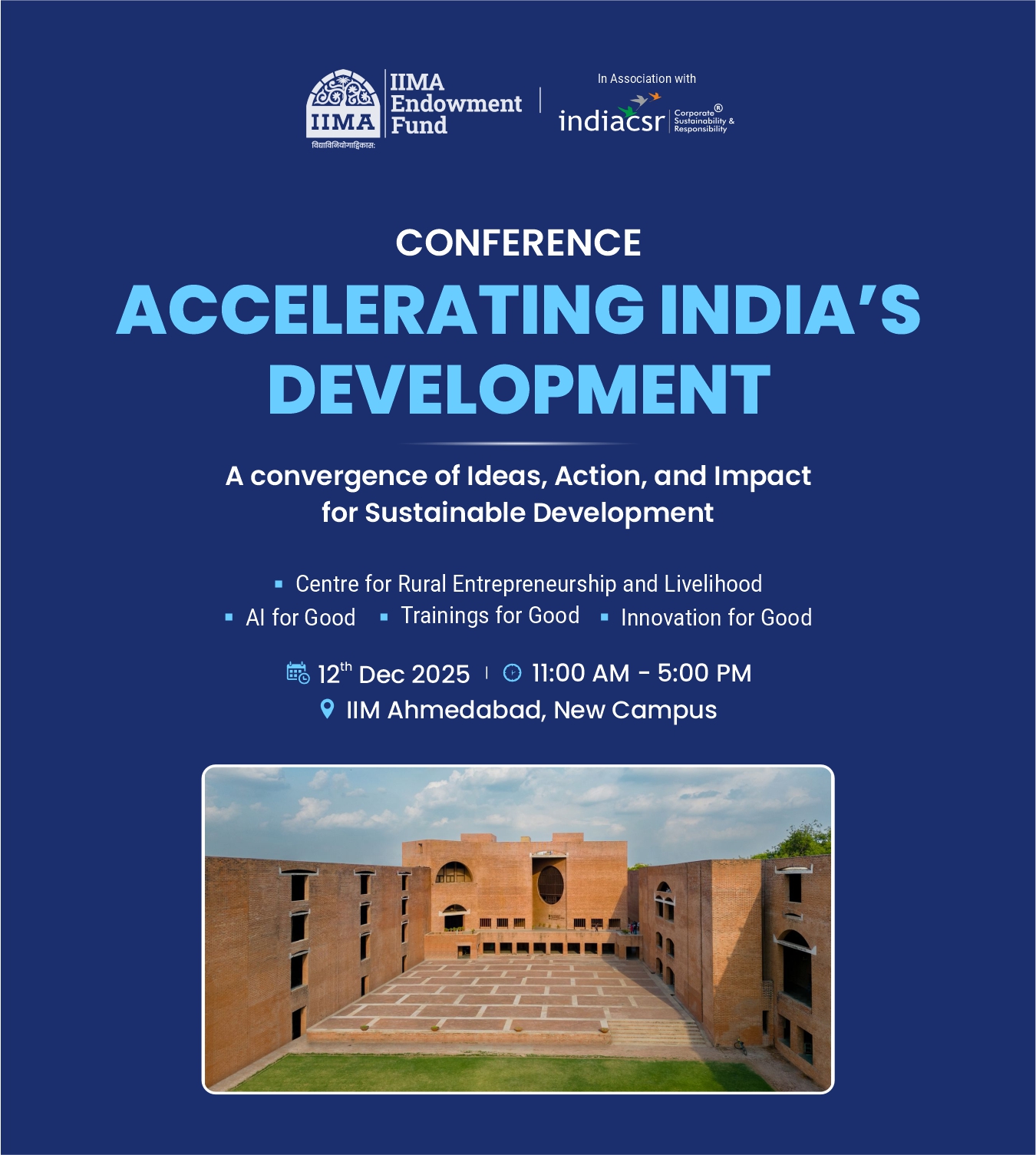India is one of the 193 countries that has formally adopted the Sustainable Development Goals (SDGs), and has been driving a host of related initiatives in the last five years. Women have been active participants in India’s sustainability journey and their efforts and work directly contribute to the betterment of the country. Rusen Kumar, India CSR spoke to Shagufta Kamran, Director, Public Policy & Government, Twitter India and Dr. Shruti Kapoor, Founder and President, Sayfty Trust to understand how women changemakers are furthering the country’s SDGs and using open services like Twitter to engage in meaningful dialogue.
How does the Open Internet empower individuals who want to make a positive difference in society?
The public conversation becomes better when it encompasses diverse perspectives and opinions, and the Open Internet, which is global, should be available to all, and should be built on open standards and the protection of human rights, acts as catalysts in this exchange. Time and again, the internet has proven itself as an enabler of free public discourse, self-expression, and cultural development. In a rapidly developing, democratic country like India, its advantages are manifold but most important of all, the internet, and spaces like Twitter, also provide a platform for social movements that lead to positive social change.
Fulfilling SDGs requires a large-scale and holistic approach. How do Twitter’s rules and tools enable people/changemakers to use the service effectively and support their efforts towards driving a common goal?
Twitter is where people come to engage in meaningful public conversation. Committed to serving this conversation, we have been working towards enabling everyone to share ideas and information, and exchange their opinions and beliefs without barriers. In addition to English, people in India can Tweet in 11 Indic languages, namely Assamese, Bengali, Gujarati, Hindi, Kannada, Malayalam, Marathi, Punjabi, Tamil, Telugu and Urdu.
We’re also constantly working to bring new ways for people to discover new conversations, follow their interests, and connect with like-minded people who care about the same things. For instance –
- Topics let people follow specific interest-based conversations. Topics use machine learning to find Tweets related to a subject. When people choose to follow a Topic, they can see Tweets from a whole host of accounts that are experts, fans or just tend to talk about that thing a lot on Twitter.
- Lists are another feature that lets people follow conversations more closely. Lists enable people to group together their Twitter accounts which Tweet on a particular theme, such as technology, sports or any other, and view Tweets from these accounts as a separate timeline.
- Last year, we started testing Communities to make it easier for people to find and connect with others who want to talk about the same things as them. Through Communities, we want to give people a dedicated place to connect, share, and get closer to the discussions they care about most.
At Twitter, we want to encourage more and more people to leverage the power of the public conversation that unfolds and continue to foster an open and healthy environment.
Women are increasingly using services like Twitter to engage in meaningful conversations. How is Twitter creating a safe online space for them?
We put the people who use Twitter first at every step and are committed to promoting healthy conversations on our service. We have clear rules in place to address abuse and harassment and hateful conduct, and take action in line with our range of enforcement options when we identify accounts that violate these Rules. Our latest Twitter Transparency Report shows an 8% increase in the number of accounts actioned for violations of our abuse policy and a 131% increase in the number of accounts actioned for violations of our sensitive media policy. This uptick is a result of both tightened rules and the power of our human review systems working in concert with machine learning.
Further, we continue to expand on and invest in our approaches to create a healthier and safer experience for anyone who uses Twitter. For instance, when receiving Direct Messages, we include the sender’s profile information and indicate how the sender is connected to the receiver, which can help people quickly identify potentially abusive content. When we detect potentially harmful or offensive language in a reply, we may ask people via a prompt if they’d like to review the reply before sending, and consider a more considerate reply. We’re testing a feature to make it easier to remove followers from public and protected accounts, giving people more control, and not requiring that they use the ‘block’ function. We’ve built out a series of conversation settings that allow people to decide who can reply to their Tweets and hide unwanted replies to their own Tweets.
Our work will never be done, and our product, policy and engineering teams continue to work at scale and pace to build a healthier Twitter.
How does Twitter see its role in bringing about change for good in society?
In recent times, Twitter and the Open Internet have emerged as catalysts for social change and we’re humbled to witness purposeful social movements being driven by the people and communities on our service. During the second wave of COVID-19 in 2021, Twitter emerged as a real-time helpline where people came together to seek and offer help. Among these were many women who used Twitter to share reliable information to support those in need. To recognise the efforts of these ‘COVID Sheroes’, we had partnered with women rights organisation Breakthrough (@INBreakthrough) and on the occasion of International Women’s Day, we launched the first ‘Twitter For Emergencies’ Handbook, which is a first of its kind, unique guide to using Twitter to connect with people, find important information, tools, and support in case of emergencies.
In another effort to encourage women to participate in meaningful conversations and to celebrate the work of exemplary women, we recently collaborated with Sayfty Trust (@SayftyCom) to launch the Changemakers Report which recognises and honours women who have been advocating for the #GlobalGoals and using social media to take forward India’s sustainability journey.
Encouraged by the service’s potential to drive change, we are continually working towards empowering people and giving them a medium to share their perspectives and passions.

Responses by Sayfty Trust | Dr. Shruti Kapoor, Founder and President, Sayfty Trust
As per Niti Ayog, India will fully achieve sustainable development goals by 2023. How does open internet become a part in realising this?
Goal 9, of the 17 SDGs, aims to significantly increase access to Information & Communication Technology (ICT) and strive to provide universal and affordable access to the internet in least developed countries by 2020. Having an Open Internet is essential to the implementation of and monitoring of the SDGs, and empower the realisation of the global goals.
Past studies have indicated that women in developing countries in Africa, Asia and South America are 50% less likely than men – with the same education, income and age – to have access to the internet. This through SDG5 can have ramifications on other SDGs like education (SDG 4), good health and wellbeing (SDG 3) and Decent work and economic growth (SDG 8) amongst other things. Open Internet gives people (especially women) access to education, awareness on health and well being, climate, clean water and sanitation and a host of other SDGs.
With smartphone subscriptions increasing from 2.9 billion to 8.3 billion in 2021, Open Internet will only facilitate adoption of information technology in developing countries opening up myriad possibilities under each SDG.
Twitter India and Sayfty Trust recently launched the Changemakers Report. How were these women changemakers identified?
The 17 women changemakers were identified through a rigorous process of selection. Early in October, Sayfty Trust sent out a call for nominations through our network of partners, emails, social media, and first hand research to identify Indian women working towards Sustainable Development Goals (SDGs) and using Twitter as they do so. In less than two weeks, we identified 200+ potential candidates. The nominations were diverse and came from rural and urban regions, those working in an individual capacity/ or through their organisations. After detailed deliberations on each nomination, their work, and usage of Twitter, we shortlisted 81 candidates.
Each of these 81 candidates were then asked to provide more details on their work related to the SDGs and their use of Twitter via a questionnaire. 27 candidates were then selected and invited for one-on-one interviews with myself and the Sayfty Trust team. Through each of these one hour interviews we learnt more about each changemaker, their journey of using Twitter; and how they are working towards the SDGs. Candidates were also asked to participate as panelists on Twitter chats focussed on SDGs and Women Changemakers. Based on the interview responses, understanding of their work, how they use Twitter, participation in Twitter chats and community engagement, team Sayfty Trust finally shortlisted the 17 changemakers.
These 17 changemakers were announced through Twitter Spaces and the report was simultaneously launched celebrating these women changemakers.
Can you shed light on Sayfty Trust’s work with the changemakers? Also, how are you fostering a dialogue around women’s safety and empowerment through social media?
Through our work at Sayfty Trust we were familiar with the work of some select changemakers over the years. We have engaged with them as partners through various campaigns and projects. For example through Pragya Vats, we have partnered with Save the Children India on some of their projects on girl’s safety and education like #LightUpHerLife. We have had some others like Rituparna Chatterjee and Lakshmi Puri as guest experts on our Twitter chats and other in-person events focussed on SDG5 and addressing gender-based violence. Bharti Sharma who runs Shakti Shalini was a key speaker when we launched the Sayfty Survivors Toolkit in 2019.
This project allowed us to connect with many new changemakers working on the SDGs and leveraging Twitter in their advocacy. For example we learnt about the wonderful work being done by Purnima Barman to save Hargila Storks, and recently engaged with them through our panel Twitter chats and Twitter Spaces. We plan to continue our work with these changemakers in the future through potential projects and campaigns.
Sayfty Trust actively uses social media to connect and engage with a global audience to address gender-based violence. Our most active platform is Twitter and over the years through our weekly Twitter chats, #sayftychat we have built a strong global community to talk about women’s issues. Through our weekly #sayftychats on Twitter, we create safe online spaces to have open conversations on topics related to women’s safety (such as Root causes of gender-based violence, Role of men and boys in promoting gender equality and others) and gender equality. We have conducted over 300 Twitter chats. These chats have created 900 million impressions on Twitter annually with over 2 million users participating from 45+ countries.
Participants join these chats to share their experiences, opinions, and best practices on the topics weekly. The chats have successfully engaged experts from UN, academia, civil society, private sector and the government and even received grants from Twitter to raise awareness on topics which are usually taboo and less talked about in our society.





